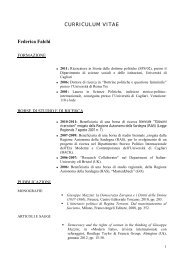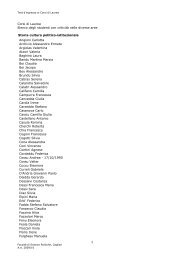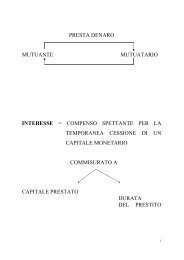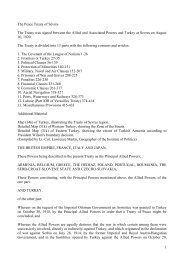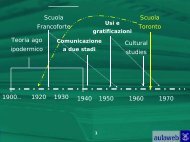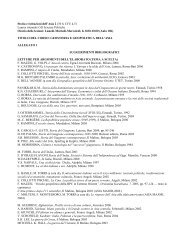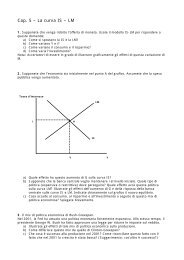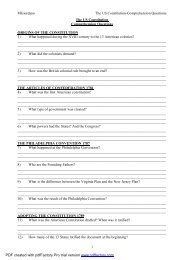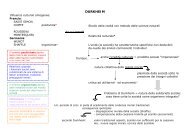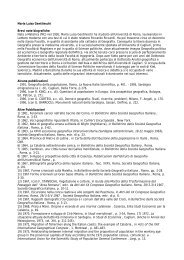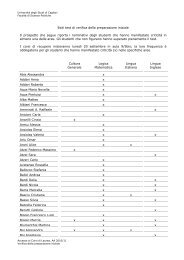Controlling for Heterogeneity in Gravity Models of Trade
Controlling for Heterogeneity in Gravity Models of Trade
Controlling for Heterogeneity in Gravity Models of Trade
Create successful ePaper yourself
Turn your PDF publications into a flip-book with our unique Google optimized e-Paper software.
<strong>Controll<strong>in</strong>g</strong> <strong>for</strong> <strong>Heterogeneity</strong> <strong>in</strong> <strong>Gravity</strong> <strong>Models</strong> <strong>of</strong> <strong>Trade</strong>I-Hui Cheng and Howard J. Wall1. IntroductionStart<strong>in</strong>g <strong>in</strong> the 1860s when H. Carey first applied Newtonian Physics to the study <strong>of</strong>human behavior, the so-called “gravity equation” has been widely used <strong>in</strong> the social sciences.More recently, gravity model studies have achieved empirical success <strong>in</strong> expla<strong>in</strong><strong>in</strong>g various types<strong>of</strong> <strong>in</strong>ter-regional and <strong>in</strong>ternational flows, <strong>in</strong>clud<strong>in</strong>g labor migration, commut<strong>in</strong>g, customers,hospital patients, and <strong>in</strong>ternational trade. 1 The widespread use <strong>of</strong> gravity equations is despite thefact that they have tended to lack strong theoretical bases.The gravity model <strong>of</strong> <strong>in</strong>ternational trade was developed <strong>in</strong>dependently by T<strong>in</strong>bergen(1962) and Pöyhönen (1963). In its basic <strong>for</strong>m, the amount <strong>of</strong> trade between two countries isassumed to be <strong>in</strong>creas<strong>in</strong>g <strong>in</strong> their sizes, as measured by their national <strong>in</strong>comes, and decreas<strong>in</strong>g <strong>in</strong>the cost <strong>of</strong> transport between them, as measured by the distance between their economic centers. 2Follow<strong>in</strong>g this work, L<strong>in</strong>nemann (1966) <strong>in</strong>cluded population as an additional measure <strong>of</strong> countrysize, employ<strong>in</strong>g what we will call the augmented gravity model. 3It is also common to <strong>in</strong>steadspecify the augmented model us<strong>in</strong>g per capita <strong>in</strong>come, which captures the same effects. 4Whichever specification <strong>of</strong> the augmented model is used, the purpose is to allow <strong>for</strong> non-1 See Sen and Smith (1995) <strong>for</strong> a survey.2 For recent examples <strong>of</strong> the basic gravity model see McCallum (1995), Helliwell (1996), and Boisso andFerrant<strong>in</strong>o (1997).3 For recent uses <strong>of</strong> the augmented gravity model with population see Oguledo and MacPhee (1994), Boisso andFerrant<strong>in</strong>o (1997), and Bayoumi and Eichengreen (1997).4 Examples <strong>of</strong> the augmented model with per capita <strong>in</strong>come <strong>in</strong>clude Sanso, Cuairan, and Sanz (1993), Frankeland Wei (1998), Frankel, Ste<strong>in</strong>, and Wei (1995,1998), Eichengreen and Irw<strong>in</strong> (1998).1



